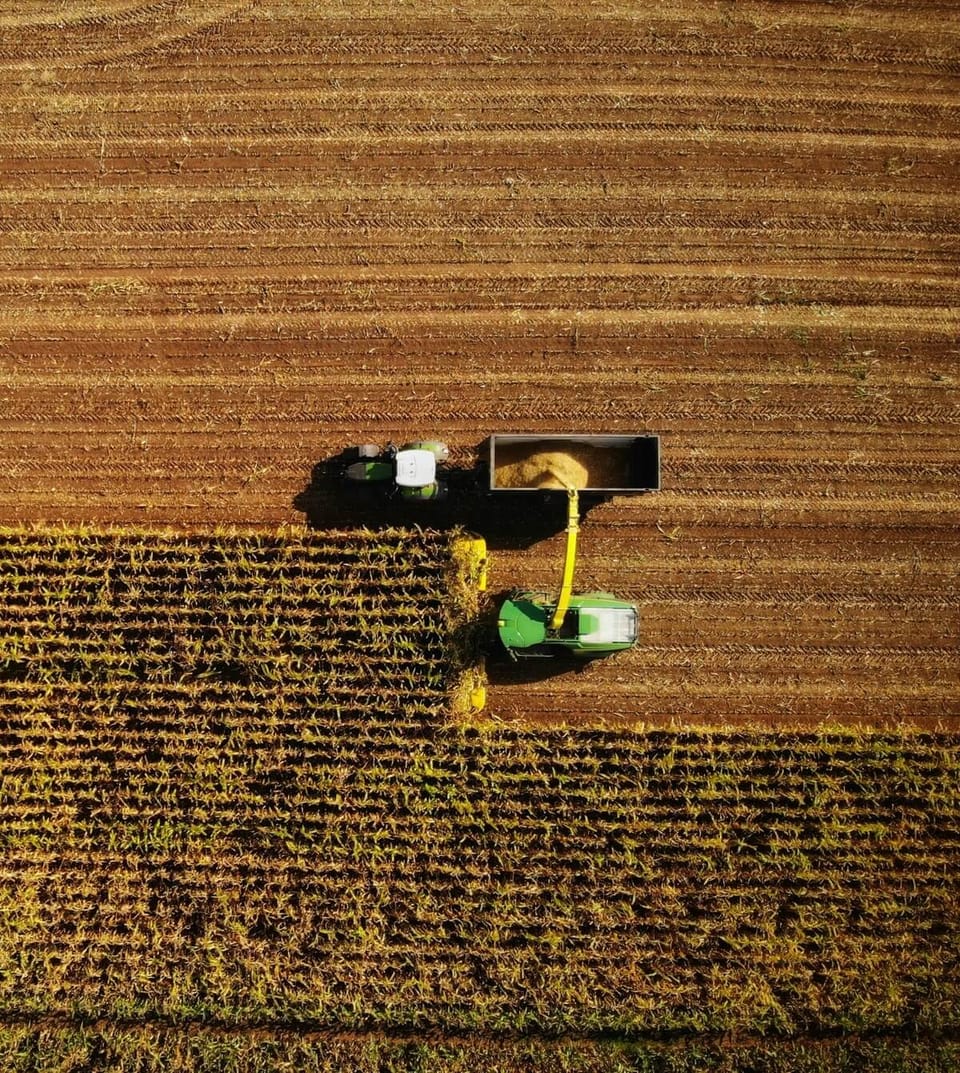Future of Food: Sustainable Innovations 2025
How cutting-edge food innovations and minimalist approaches can fight climate change and reshape our world for the better.

In a world grappling with climate change and resource scarcity, the future of food is no longer just about what’s on your plate—it’s about saving the planet. Food systems contribute to roughly 30% of global greenhouse gas emissions, yet innovative solutions are emerging to transform how we grow, consume, and think about food. From regenerative farming to lab-grown proteins, the path to a healthier planet lies in sustainable, intentional choices. Ready to explore how food innovations can fight climate change and inspire a minimalist, wellness-focused lifestyle? Let’s dive in.
Why the Future of Food Matters
Food is the cornerstone of life, but our current systems strain the environment. Agriculture drives deforestation, water overuse, and soil degradation, while food waste generates 8-10% of global emissions. For globally-minded individuals aged 25-45, who value sustainability and innovation, the stakes are high. The good news? Pioneering trends are reshaping food systems to align with environmental consciousness and holistic health.
The Environmental Cost of Food
Modern food production has a hefty footprint:
- Carbon Emissions: Livestock farming alone accounts for 14.5% of global greenhouse gases (FAO, 2024).
- Water Usage: Producing one kilogram of beef requires 15,000 liters of water, compared to 1,250 liters for rice.
- Land Degradation: 33% of global soils are degraded due to intensive farming practices.
These stats demand action. Sustainable food innovations offer hope, blending green technology with minimalist approaches to consumption.
Food Innovations That Fight Climate Change
Cutting-edge solutions are redefining how we produce food, making it more sustainable and resilient. Here are the game-changers driving the future of food.
Regenerative Farming: Healing the Earth
Regenerative farming goes beyond organic—it rebuilds soil health, sequesters carbon, and boosts biodiversity. By using cover crops, crop rotation, and minimal tillage, farmers can restore ecosystems while producing nutrient-rich food.
- Real-World Example: In California, White Oak Pastures uses regenerative practices, sequestering 3.5 tons of CO2 per hectare annually, offsetting emissions equivalent to 10,000 cars.
- Impact Data: Regenerative systems can increase soil carbon by 1-2% annually, combating climate change (Rodale Institute, 2024).
“Regenerative agriculture is a love letter to the Earth, rebuilding what industrial farming broke.” — Gabe Brown, regenerative farming pioneer.
Curious about its potential? Learn how regenerative farming could save our food system.
Lab-Grown Meat: Protein Without the Planet’s Pain
Cultivated meat, grown from animal cells in bioreactors, slashes environmental impact. It uses 95% less land and 78% less water than traditional livestock farming.
- Real-World Example: Singapore’s Shiok Meats produces lab-grown shrimp, cutting emissions by 80% compared to conventional shrimp farming.
- Stat: By 2030, cultivated meat could make up 10% of the global meat market (McKinsey, 2025).
This innovation aligns with minimalist values, reducing resource use while maintaining culinary authenticity.
Vertical Farming: Growing Up, Not Out
Vertical farms stack crops in controlled environments, using hydroponics and LED lighting to maximize efficiency. They reduce water use by 90% and eliminate pesticide needs.
- Real-World Example: AeroFarms in New Jersey grows 2 million pounds of greens annually in a 70,000-square-foot facility, using 1% of the land traditional farms require.
- Stat: Vertical farming could reduce agricultural land use by 99% if scaled globally (World Economic Forum, 2024).
These farms bring fresh produce to urban areas, supporting sustainable living and wellness.
Future Food Trends for a Healthier Planet
Beyond production, how we consume food shapes the planet’s future. These trends blend environmental consciousness with intentional living.
Plant-Based Diets: Less Meat, More Impact
Shifting to plant-based eating cuts personal carbon footprints by up to 50%. It’s not about going fully vegan—it’s about mindful choices.
- Trend: Flexitarian diets, emphasizing plants with occasional meat, grew 20% in popularity among 25-45-year-olds in 2024 (Euromonitor).
- Example: Impossible Foods’ plant-based burgers mimic meat’s taste, making sustainable eating accessible and delicious.
“Eating less meat is the single most effective way to reduce your environmental impact.” — Dr. Marco Springmann, Oxford University.
Zero-Waste Cooking: Minimalism in the Kitchen
Minimalist approaches to food consumption reduce waste and promote intentionality. Zero-waste cooking uses every part of an ingredient, from carrot tops to fish bones.
- Trend: 62% of millennials prefer brands with zero-waste commitments (Nielsen, 2024).
- Example: Chef Dan Barber’s Blue Hill restaurant turns vegetable scraps into flavorful sauces, inspiring home cooks to do the same.
Try this: Save vegetable peels for broth or compost them to enrich your garden soil.
Edible Insects: Protein with a Tiny Footprint
Insects like crickets and mealworms offer high-protein, low-impact alternatives to meat. They require 1,000 times less water than beef and emit negligible emissions.
- Trend: Insect-based snacks grew 15% in global markets in 2024 (Statista).
- Example: UK’s Crunchy Critters sells cricket flour for baking, blending sustainability with culinary creativity.
This trend appeals to adventurous eaters who value wellness and environmental consciousness.
Minimalist Approaches to Food Consumption
Minimalism isn’t just about decluttering your home—it’s about intentional food choices. These strategies align with sustainable living and holistic health.
Mindful Eating: Quality Over Quantity
Mindful eating focuses on savoring high-quality, sustainable foods. It reduces overconsumption and fosters gratitude for each bite.
- Action Tip: Choose locally sourced, seasonal produce to cut transport emissions by up to 20%.
- Stat: 78% of Gen Z and millennials say mindful eating improves their mental health (Wellness Institute, 2025).
Meal Planning: Less Waste, More Wellness
Planning meals weekly minimizes food waste and saves money. It’s a minimalist hack for sustainable living.
- Action Tip: Batch-cook plant-based meals to streamline prep and reduce energy use.
- Stat: Households that meal plan waste 25% less food (EPA, 2024).
Community Gardens: Connection and Sustainability
Community gardens foster local food production and social bonds. They reduce reliance on industrial agriculture and promote wellness.
- Example: Brooklyn’s Red Hook Community Farm grows 10,000 pounds of produce annually, serving low-income residents.
- Stat: Urban gardens can lower city carbon footprints by 0.5% per year (Global Covenant of Mayors, 2024).
The Role of Green Technology in Food Systems
Green tech is revolutionizing food production and consumption. From AI-driven farming to blockchain for supply chain transparency, technology drives sustainability.
- AI in Agriculture: Precision farming tools optimize water and fertilizer use, cutting waste by 30% (ResearchGate, 2025).
- Blockchain: Tracks food from farm to table, ensuring ethical sourcing. Example: IBM’s Food Trust platform verifies sustainable coffee origins.
- Smart Appliances: Energy-efficient kitchen gadgets, like solar-powered ovens, reduce household emissions by 10% (Deloitte, 2024).
“Technology isn’t just a tool—it’s a bridge to a sustainable food future.” — Dr. Sonja Vermeulen, CGIAR.
Call to Action: Shape the Future of Food
The future of food starts with you. Small, intentional changes can ripple outward, creating a healthier planet. Here’s how to act now:
- Eat Less Meat: Try one plant-based meal a week to cut your carbon footprint.
- Support Local: Buy from farmers’ markets or join a community garden.
- Reduce Waste: Compost scraps or use apps like Too Good To Go to save surplus food.
- Explore Innovations: Try lab-grown meat or insect-based snacks for a sustainable twist.
- Learn More: Dive into regenerative farming’s potential to understand its impact.
By embracing these trends, you’re not just eating—you’re voting for a sustainable, authentic, and innovative future.








